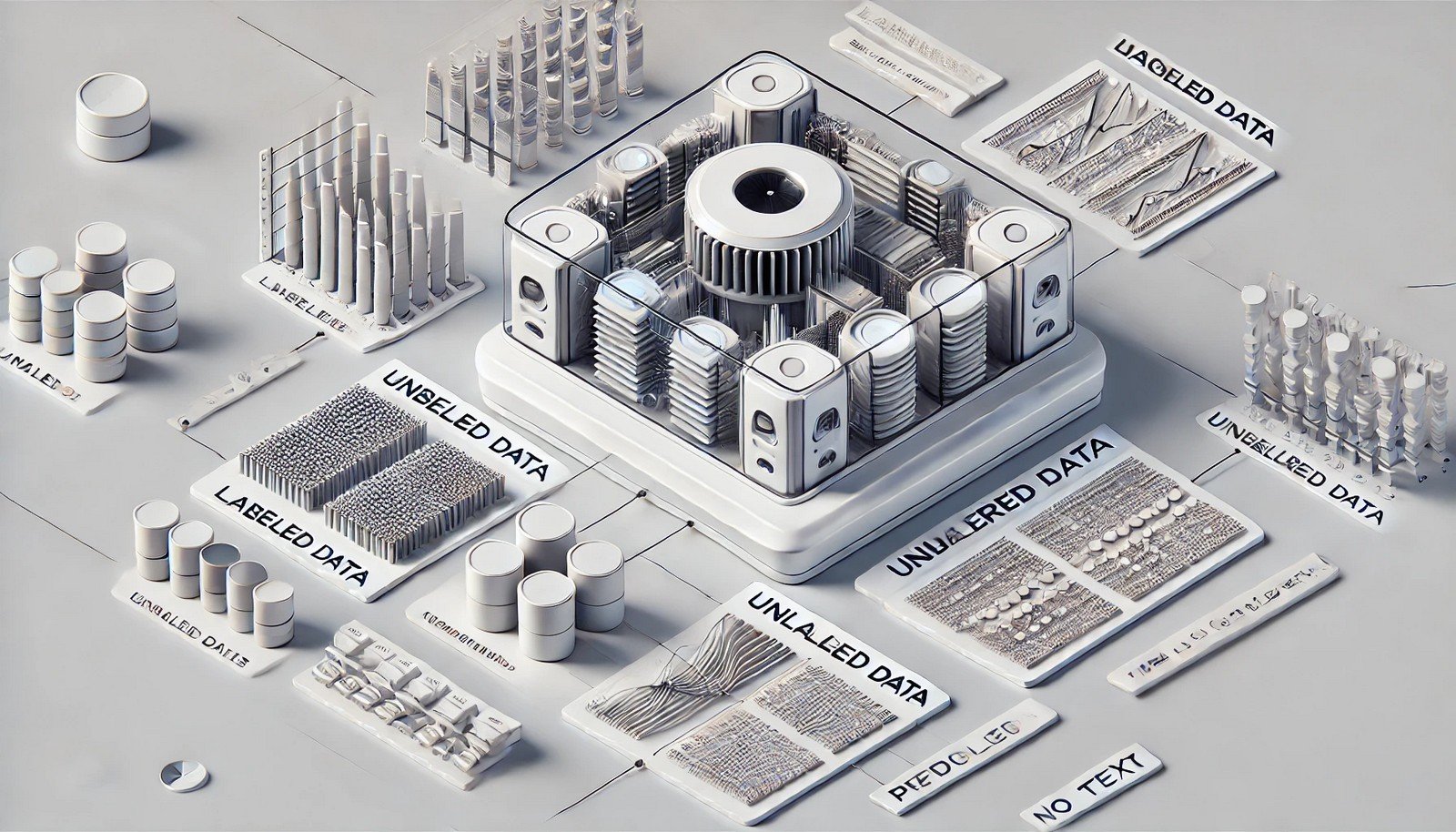Pseudo-Labeling in AI

Quick Navigation:
- Pseudo-Labeling Definition
- Pseudo-Labeling Explained Easy
- Pseudo-Labeling Origin
- Pseudo-Labeling Etymology
- Pseudo-Labeling Usage Trends
- Pseudo-Labeling Usage
- Pseudo-Labeling Examples in Context
- Pseudo-Labeling FAQ
- Pseudo-Labeling Related Words
Pseudo-Labeling Definition
Pseudo-Labeling is a semi-supervised learning technique in machine learning where a model generates “pseudo labels” based on its predictions for unlabeled data. These pseudo labels, treated as if they were actual labels, are then used to train the model further. This approach enhances model performance when acquiring large labeled datasets is difficult or expensive. The pseudo-labeling process iteratively refines the model by incorporating its predictions on unlabeled data as additional training points, leveraging both labeled and unlabeled data.
Pseudo-Labeling Explained Easy
Imagine a teacher tells you to complete a worksheet, but some answers are missing. You guess the missing answers based on what you know and learn from these guesses. Over time, as you review, you become more confident in your guesses. Pseudo-Labeling works similarly: a model makes guesses for unlabeled data and uses those guesses to improve its skills.
Pseudo-Labeling Origin
Pseudo-Labeling originated as a solution within machine learning and deep learning research to handle situations where labeled data was limited. Researchers found that using the model’s own predictions to label data could improve performance, especially in image and text classification tasks.
Pseudo-Labeling Etymology
The term “pseudo” in Pseudo-Labeling means “false” or “not genuine.” Here, it signifies that the labels are not manually assigned by humans but rather generated by the model itself.
Pseudo-Labeling Usage Trends
Pseudo-Labeling has seen increased use in the past few years, especially with the growing interest in semi-supervised learning. It is commonly applied in fields like natural language processing, image classification, and autonomous systems, where labeled data is costly or time-consuming to obtain.
Pseudo-Labeling Usage
- Formal/Technical Tagging:
- Semi-Supervised Learning
- Machine Learning
- Data Science - Typical Collocations:
- “pseudo-labeling technique”
- “pseudo labels for unlabeled data”
- “semi-supervised learning with pseudo-labeling”
- “pseudo-labeling model training”
Pseudo-Labeling Examples in Context
- In image classification, pseudo-labeling allows models to improve accuracy by generating labels for large datasets where manual labeling isn’t feasible.
- For text analysis, pseudo-labeling can create labeled samples from a large set of unannotated documents, helping improve language models.
- Pseudo-labeling is used in speech recognition to label audio data that otherwise lacks transcriptions.
Pseudo-Labeling FAQ
- What is pseudo-labeling?
Pseudo-Labeling is a technique where a model generates its own labels for unlabeled data to improve training. - How does pseudo-labeling work?
The model predicts labels for unlabeled data, using these as training points to refine its learning. - When is pseudo-labeling useful?
It’s especially valuable when labeled data is scarce or expensive to obtain. - Is pseudo-labeling reliable?
It can improve model performance, though quality depends on the initial model’s accuracy. - What are common applications of pseudo-labeling?
Fields like image classification, text analysis, and autonomous systems use pseudo-labeling. - How does pseudo-labeling benefit AI development?
It maximizes the use of both labeled and unlabeled data, improving model training. - Can pseudo-labeling be combined with other learning methods?
Yes, it’s often integrated with supervised learning for better results. - Does pseudo-labeling require any specific algorithms?
Many machine learning algorithms can implement pseudo-labeling, especially neural networks. - What are the risks of pseudo-labeling?
Mislabeling can occur if the initial model’s predictions are inaccurate, which may reduce performance. - How is pseudo-labeling different from self-training?
While both use a model's own predictions, pseudo-labeling specifically adds these as "pseudo" labels to enhance training.
Pseudo-Labeling Related Words
- Categories/Topics:
- Semi-Supervised Learning
- Artificial Intelligence
- Predictive Modeling
Did you know?
Pseudo-Labeling has greatly contributed to advancements in autonomous vehicles by enabling the use of vast amounts of unlabeled driving data. This approach aids self-driving cars in recognizing road signs, pedestrians, and obstacles without extensive manual labeling.
PicDictionary.com is an online dictionary in pictures. If you have questions or suggestions, please reach out to us on WhatsApp or Twitter.Authors | Arjun Vishnu | @ArjunAndVishnu

I am Vishnu. I like AI, Linux, Single Board Computers, and Cloud Computing. I create the web & video content, and I also write for popular websites.
My younger brother, Arjun handles image & video editing. Together, we run a YouTube Channel that's focused on reviewing gadgets and explaining technology.



Comments powered by CComment